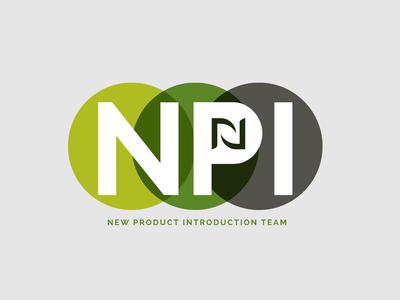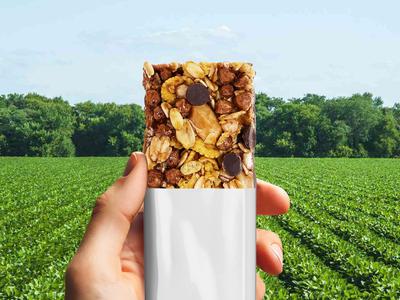Meeting the Added Sugars Challenge
With the upcoming FDA sugar labeling suggested requirements, product labels will call out Total Sugar and Added Sugar per serving on the re-designed Nutrition Facts label. We sat down with our R&D directors, Lis Renini (Bars) and Tom Hirschbeck (Powders) to discuss what these changes mean for nutritional bar and powder formulators and manufacturers.
1. What is the biggest challenge regarding the new added sugar labeling recommendations?
For nutrition bar manufacturers:
Lis: Carbohydrate syrups classically used in the nutrition bar industry are very effective and affordable binders, but they generally bring high added sugars along with them. No single ingredient can perform all the functions of sugar in food, so a big challenge in formulating bars lower in added sugars is substituting these high-sugar syrups with the right combination of ingredients, for both taste and texture.
For nutrition powder manufacturers:
Tom: Since most consumers are looking to reduce the amount of sugar consumed daily, the task most nutritional powder manufacturers will face is reducing the amount of sugars in a product without sacrificing taste and mouthfeel. For nutraceutical powder beverages, reducing the amount of sugar is not an issue, due to the availability of high quality, zero-sugar natural sweeteners.
2. What role do added sugars play in formulating a consumer-pleasing product? (In terms of appearance, taste, texture, shelf life, etc.)
In nutrition bars
Lis: Humans are naturally attracted to sweet foods, but sugar plays many roles beyond sweetness alone. Sugars help potentiate flavor, bind other ingredients such as proteins and inclusions, participate in browning reactions that yield color and flavor, and provide humectancy for a consistent texture throughout shelf life.
In nutritional powders
Tom: Added sugar in a formulation will provide an overall flavor ‘roundness’ and accentuate any flavor system to make it pop. Nellson has extensive formulation experience with reducing the amount of sugar in a product and replacing it with high quality, natural, zero-calorie sweeteners.
3. How will Nellson R&D help manufacturers with their added sugar labeling concerns?
Tom & Lis: Based on the target nutritional guidelines for a new product development project, Nellson R&D can formulate great tasting sugar-reduced products using the latest sugar replacement technology. We work with our customers to understand the target sugar claims that a customer is looking to make with their new product initiative. Based on this information, we provide our customers with several product flavor profile options based on their target nutrition. Because sugar performs many functions simultaneously in the food matrix, its replacement requires careful combination of alternative ingredients that can fill each of its roles. By understanding specific consumer requirements for sensory qualities, nutrition fact restrictions, and ingredient listings, we are well-positioned to respond with a customized solution.
4. How do you think these labelling changes will affect the choices these manufacturers make?
Lis: With the clear labeling of added sugars, some consumer segments will undoubtedly apply more scrutiny to the source of sugars in their foods, and prefer naturally-occurring sources such as fruit. Manufacturers may opt to limit their sugars to naturally-occurring sources, and highlight low added sugar on packaging.
Tom & Lis: With consumers wanting less sugar in the products they eat, food manufacturers are being tasked with creating great-tasting products with reduced sugar content that are on-par with current full sugar items.
Are there any particular examples of formulations that will be particularly challenging?
Lis: Plant-based protein powders can sometimes be a bit of a challenge to create a dynamic flavor profile since the plant proteins can absorb flavors and sweetness, affecting the flavor. Nellson works closely with its preferred ingredient suppliers to provide great tasting, reduced-sugar product options to overcome this challenge.
5. Do you think that the declaration of added sugars will cause manufacturers to re-evaluate and /or reformulate current products?
Tom & Lis: Absolutely, with the new sugar labeling format, the “Added Sugars” section will call out any additional sugar that is being added to a product, which will in turn cause consumers to be more critical about the products they purchase. Nutrition bars and powders are not the leading contributors of added sugars – soda, juices and sweets are greater culprits. However, while consumers may accept indulgence in certain foods, most tend to be particularly critical of their nutritional supplements. Aside from changing their labeling practices to conform to the new law, many manufacturers of these types of food products will aim to stay relevant by reformulating their current products to lower added sugars and, to a lesser extent, total sugars.
What, if any, plans does Nellson plan to make regarding these reduced sugar formulation challenges?
Tom & Lis: We continuously partner with suppliers and industry experts to identify science-based ingredients, including replacements to high-sugar materials, and our scale allows us to leverage lower input costs without compromising quality. We will continue to work with our preferred ingredient suppliers and network to keep abreast of new sugar replacement technology and ingredients as a resource, to continue to provide our customers products containing reduced sugar.
6. Beyond Added Sugars
Tom & Lis: Ultimately, all dietary sugars are converted to glucose in the body, whether they come from an apple or a piece of candy. While excessive amounts of sugar are undoubtedly detrimental to health, many nutrition-conscious consumers view sugars in moderation as acceptable, and understand that many other ingredients—notably fibers—affect their metabolic response to food. It is important for manufacturers to strike a balance between the reduction of added sugars and the sensory quality of the food, which remains imperative across consumer segments.
Category: Ingredients







